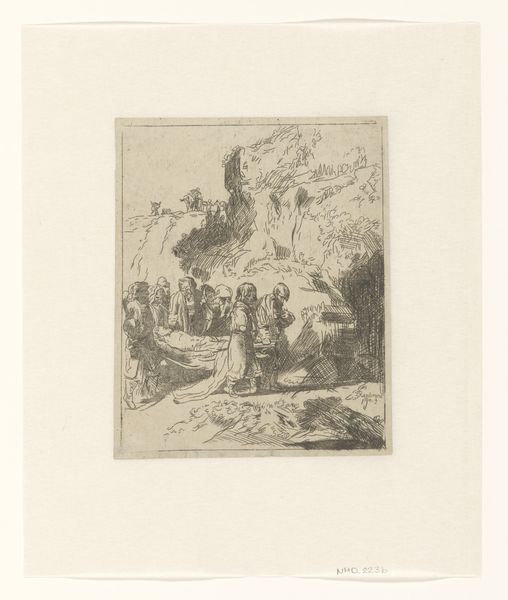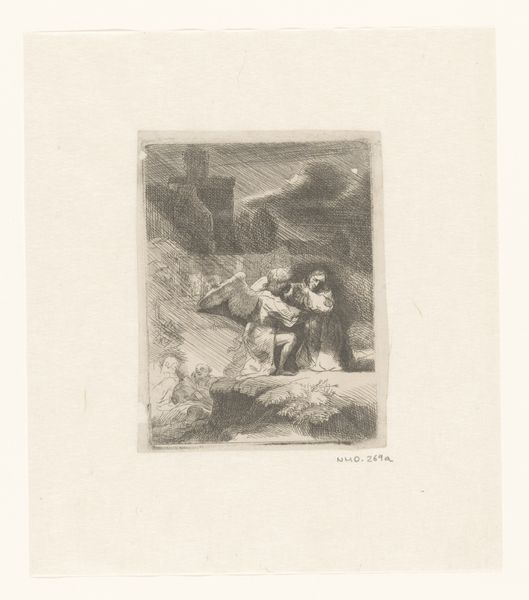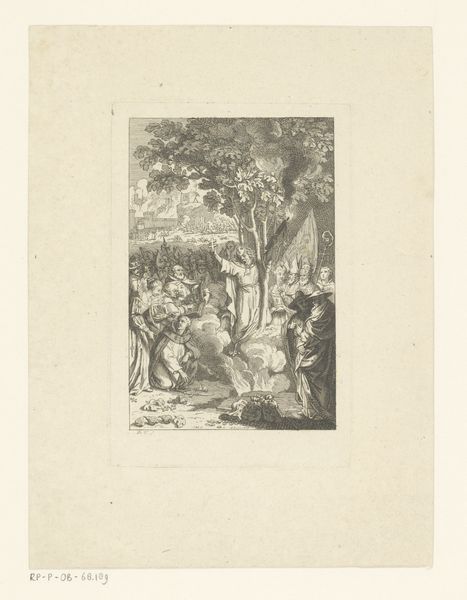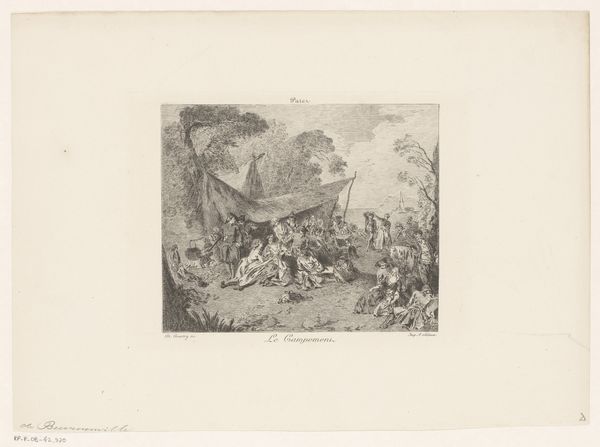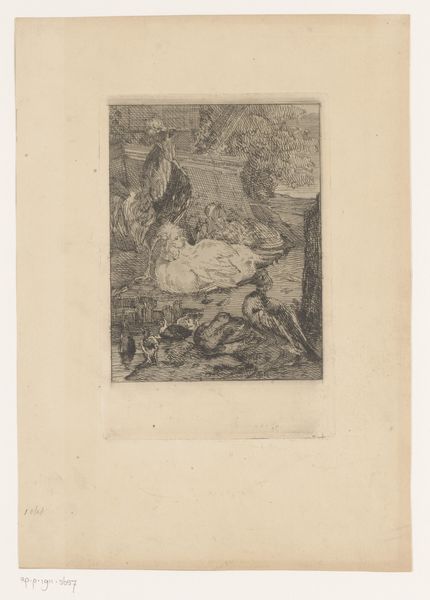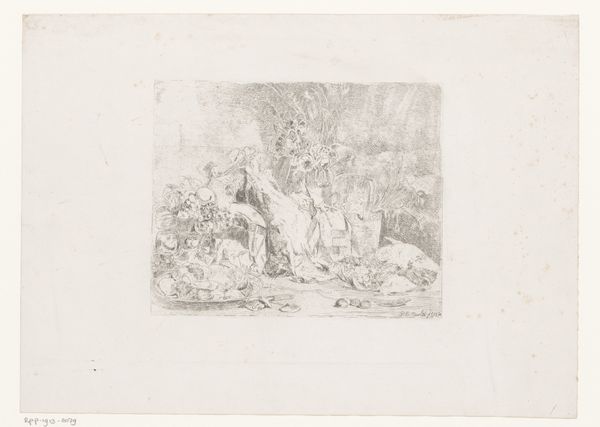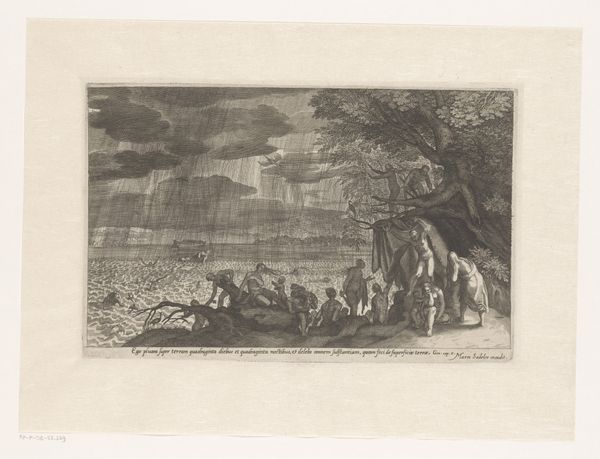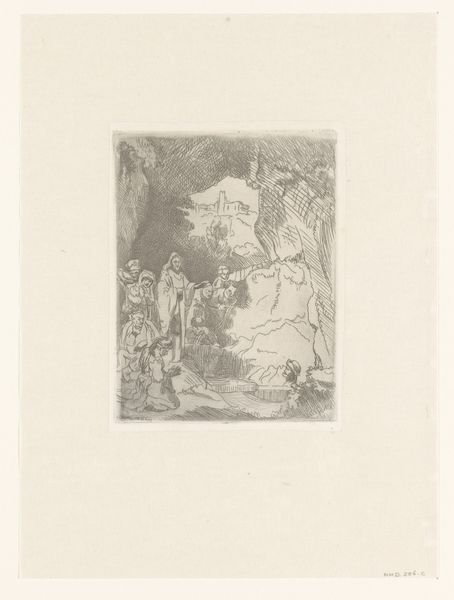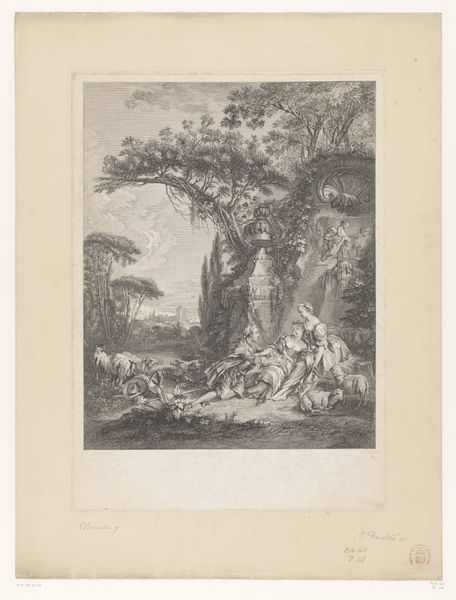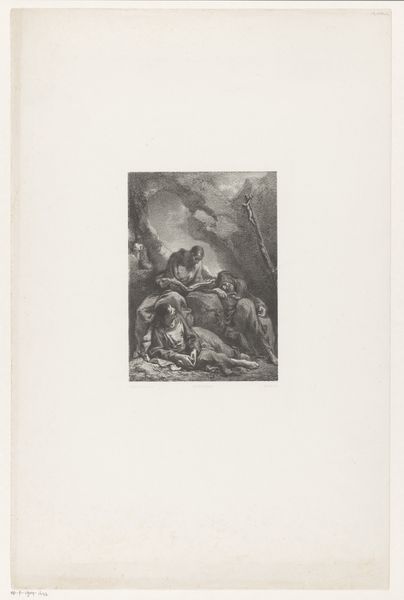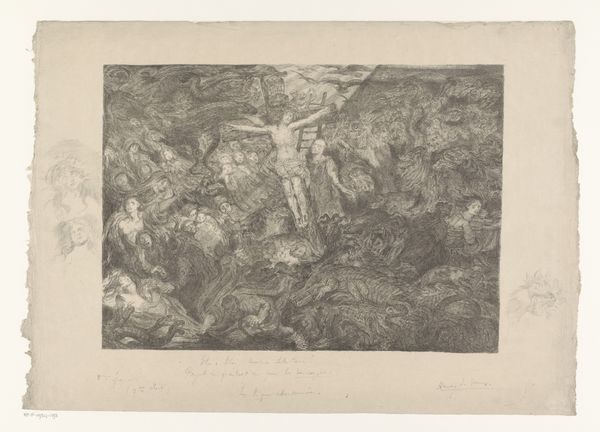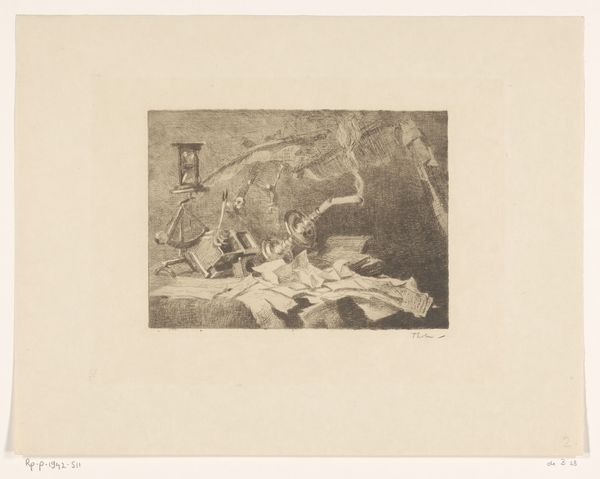
drawing, print, etching, paper, engraving
#
pencil drawn
#
drawing
#
baroque
# print
#
etching
#
pencil sketch
#
old engraving style
#
landscape
#
figuration
#
paper
#
pencil drawing
#
genre-painting
#
history-painting
#
engraving
Dimensions: height 241 mm, width 178 mm
Copyright: Rijks Museum: Open Domain
Franz Sigrist created this etching, “Bespotting van Job op de mestvaalt”, which translates to "Mocking Job on the Dunghill", sometime in the late 18th century. It depicts a scene from the Book of Job, a popular subject in religious art of the period. Here, Job is shown suffering, covered in sores and sitting on a dung heap, while others mock and scorn him. Sigrist employs stark lines and dramatic shading, typical of the etching technique, to emphasize the figures' emotional states. This was a time of significant social and political upheaval in Europe and religious art often served to reinforce moral values and social hierarchies. The image creates meaning through visual codes such as Job’s nakedness, connoting vulnerability, in contrast to the clothed figures of his tormentors. For a deeper understanding, one could explore the historical context of religious art in the Netherlands during the late 1700s, examining religious and political pamphlets and other cultural artifacts. The meaning of art is contingent on its social context.
Comments
No comments
Be the first to comment and join the conversation on the ultimate creative platform.
